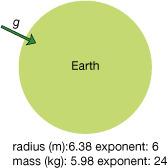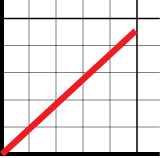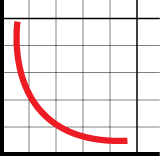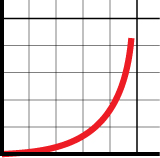Module 4—Gravitational Force
 Explore
Explore
gravity: a force of attraction towards the centre of a mass
Gravity was studied by Galileo and Galileo, and exploited by many. Common experiences with the force of gravity include some exciting activities and also a few painful ones. You probably started to learn about gravitational effects at an early age from the playground slide, swing, and teeter totter. Later in life, you may have learned more painful lessons, such as falling out of trees or crashing down ski slopes. Less painful activities could have included rock climbing and riding in elevators. From these experiences, you know that gravity is a force that causes objects to fall to the surface of Earth. With more detailed studies, scientists found that objects near the surface of Earth tend to fall at exactly the same rate, with constant acceleration toward the centre of Earth. This is often described as the law of falling bodies, and it seems to contradict the personal observation that snowflakes appear to fall at a much slower rate than rain drops.
 Watch and Listen
Watch and Listen
In the absence of all other variables, such as air, the law of falling bodies is easily demonstrated both on Earth and on the Moon. The Law of Falling Bodies simulation demonstrates this law in a variety of conditions.
Earth’s Gravitational Field
The gravitational field (three-dimensional region of influence) extending outward from Earth is a vector field. (Vector fields associate a length, or magnitude, as well as a direction to every point in space.) For your purposes here, just remember that the gravitational force has both magnitude and direction everywhere in the vicinity of Earth.

A simulation will be used to visualize the characteristics of a gravitational field, such as the one produced by Earth.
Open the Inverse Square Law simulation, and then continue with the questions that follow. You may be required to login with a username and a password to access the simulation. Contact your teacher for this information.
The default settings on the simulation show the radius (6.38 × 106 m) and mass (5.98 × 1024 kg) of Earth, as well as the gravitational field direction and strength.
 Module 4: Lesson 1 Assignment
Module 4: Lesson 1 Assignment
Remember to submit the answers to TR 1, TR 2, and TR 3 to your teacher as part of your Module 4: Lesson 1 Assignment.
 Try This
Try This
TR 1. On the simulator, click the “Vector” button (![]() ), and then click anywhere in the display to see the gravitational field vector (g). Click and hold to drag it around Earth. You will notice two general characteristics of the gravitational field.
), and then click anywhere in the display to see the gravitational field vector (g). Click and hold to drag it around Earth. You will notice two general characteristics of the gravitational field.
- As you move closer to Earth, the gravitational field becomes _____________, as illustrated by the length of the vector.
- The gravitational field is always directed ____________ the centre of Earth.
- The largest value for g (acceleration due to gravity), as displayed in the data table, is __________ and occurs at the ___________ of Earth. (Note: The units for g (N/kg), as displayed in the applet, are identical to the more familiar unit for acceleration (m/s2). You will learn more about this later in the lesson.)
Note that the “E” in the data table refers to the “Exponent for a power of 10.” For example, 8.15E6 m is written in conventional notation as 8.15 × 106 m.
You should notice that the field strength (acceleration due to gravity) increases as you approach the mass (Earth) and that it is at a maximum when you reach Earth’s surface. Exactly how much it increases depends on the distance from the mass. You will use graphical analysis to determine the exact mathematical relationship between the field strength (acceleration due to gravity) and the distance from the mass causing it.
TR 2. Using the simulator, experimentally determine how the gravitational field strength (g) varies with the distance from Earth (d).
- Click on a point near Earth's surface. For this point, record the following values in the table using conventional notation:
- the distance (d), measured from the centre of Earth
- the gravitational field strength (g) at this point
Click and drag the field vector farther away from the surface. Record the new distance and gravitational field strength (g) at this point. Complete the data table below.
Distance (d) m
Gravitational Field Strength (g) N/kg
- Choose an appropriate scale and plot the data on the graph provided. The manipulated variable (d) is on the x-axis, and the responding variable (g) is on the y-axis.

TR 3. Which mathematical relationship best describes your graph of gravitational field strength versus distance? State the relationship using g for gravitational field strength and d for distance from source.
A. relationship: ![]()

B. relationship:![]()

C. relationship: ![]()

You have just stated the inverse square law that describes a gravitational field.